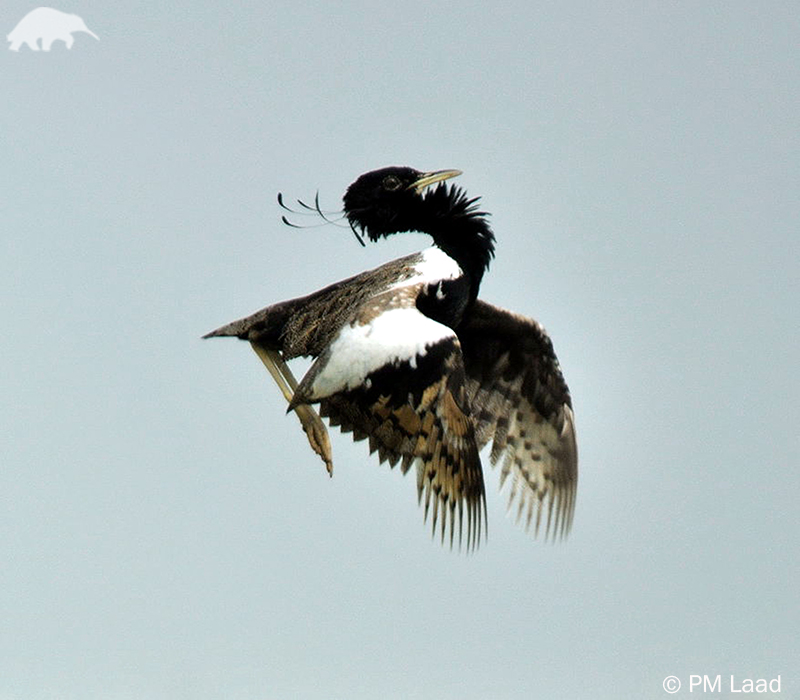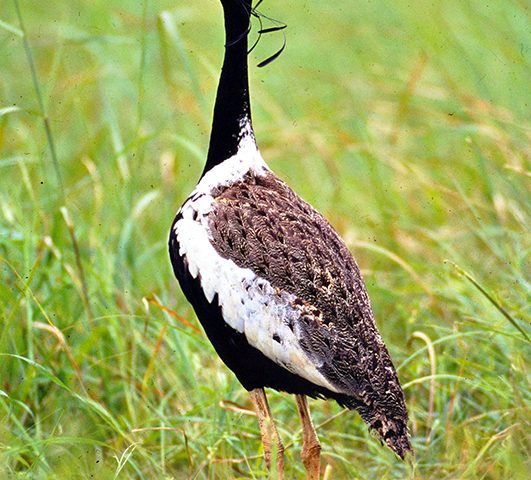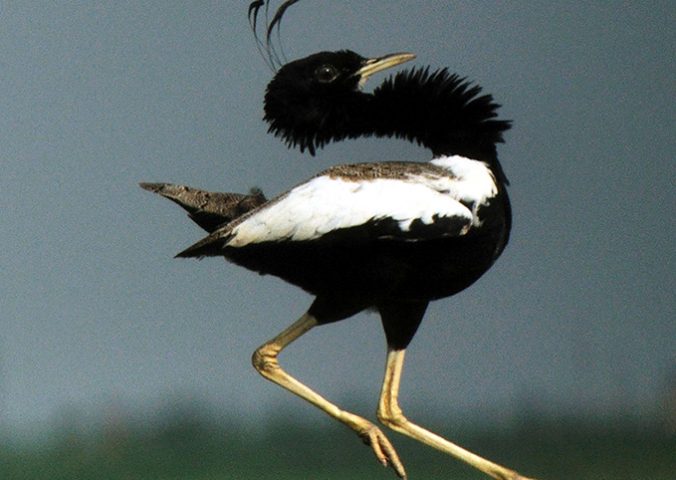About
The Lesser Florican is known for its impressive aerial courtship displays in which the male leaps vertically in the air in a flurry of wings and legs, doing so as many as 500 times a day.
Unfortunately, this conspicuous display made males very vulnerable to hunting both for food and sport. Shooting began in earnest in the 1870s, continuing for decades, and was responsible for the dramatic decline in numbers over this period, exacerbated by their preferred habitat being open grassland. Numbers have since plummeted further due to erratic monsoon rains, habitat degradation and conversion to agriculture, and the introduction of non-native plants. With the global population now estimated at just 1,500 adults, this species has been classified as Endangered. The Lesser Florican comes from the taxonomic family of bustards, the Otididae, which originated at least 30 million years ago. The Lesser Florican is the only member of its genus, Sypheotides.
- Order: Otidiformes
- Family: Otididae
- Population: 2,200
- Trend: decreasing
- Size: 46-51cm
- Weight: Unspecified
EDGE Score
Distribution
The Lesser Floricans’ are effectively endemic to India, but some occur sporadically in tiny numbers in Pakistan, with four reports of non-breeding individuals from Nepal. The population is concentrated in the north-west of India.
Habitat and Ecology
This species inhabit grasslands and open fields, particularly ungrazed areas with grass ~1 metre high but also tolerates variation in shrub density, from more open vegetation to dense forests. Movements outside the breeding season are not well understood. They are omnivores, feeding on insects, frogs, small lizards, leaves, crop shoots, herbs and berries. They have a lekking mating system, where males perform unique aerial displays.


